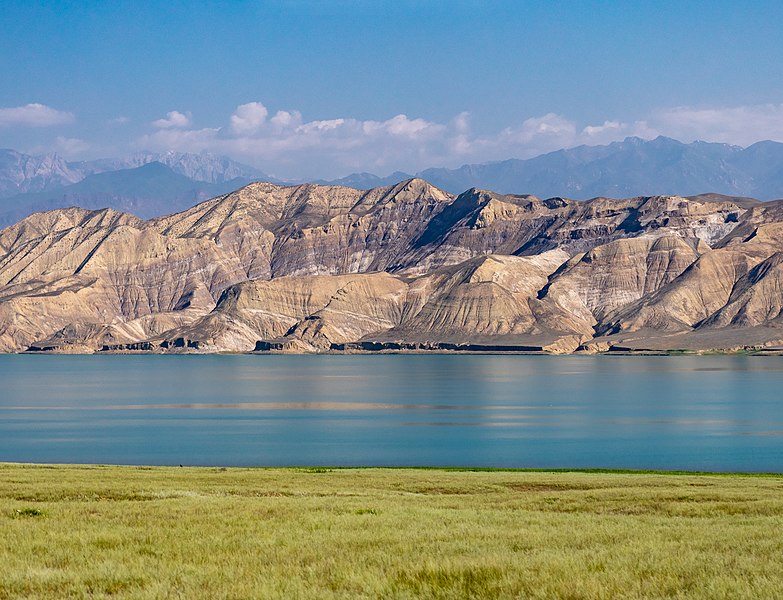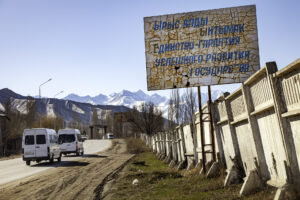With low water levels in its main reservoir, Kyrgyzstan is struggling to keep up with the increasing demand for electricity this winter. Deputy Prime Minister Ravshan Sabirov warned this increase could lead to blackouts, though he ruled out rolling shutdowns.
Kyrgyzstan’s deputy prime minister warned of possible power cuts in the country this winter. As Kyrgyz media Kloop reports, in a speech in parliament on 16 December, Ravshan Sabirov pointed out an increase in electricity consumption this month, which could lead to automatic shutdowns.
“Substations are heavily overloaded as electricity consumption is growing,” Ravshan Sabirov said. “Demand is growing by 7 to 10 million kilowatt-hours every day. Automatic, not rolling, blackouts are possible.”
Want more Central Asia in your inbox? Subscribe to our newsletter here.
On 29 December, Talaybek Baygaziyev, the head of the Kyrgyz Energy Settlement Centre, a company analysing electricity supply and consumption, also stressed the spike in electricity use, urging the population to “save electricity”.
Rolling blackouts happen when a supplier intentionally cuts electrical power to avoid a complete shutdown. As Kloop points out, such blackouts are associated with the former president Kurmanbek Bakiyev, toppled by a revolution in 2010. They often happened in 2008 and 2009 and contributed to popular discontent.
A dry year
According to Ravshan Sabirov and Talaybek Baygaziev, the cause of the potential automatic shutdowns is the low water level in the Toktogul Reservoir, a large artificial lake in the east of the country.
The Toktogul Reservoir supplies the largest power plant in Kyrgyzstan, currently undergoing modernization. In 2019, the then-president Sooronbay Jeenbekov estimated it produced 40% of the country’s electricity.
Want more Central Asia in your inbox? Subscribe to our newsletter here.
Talaybek Baygaziev links the lack of water in the reservoir to the weather. “This is due to the fact that the year was dry: the Toktogul Reservoir’s volume did not fill up sufficiently,” he explained in a press conference organised by the Russian media Sputnik. “If the amount of snow in the upper reaches of the rivers flowing into the Toktogul Reservoir is low, then the following year there may not be enough hydropower for the required amount of electricity.” This, he added, means that Kyrgyzstan will have even more difficulties with electricity supply next year.
Imports fell through
As Kloop notes, Deputy Prime Minister Ravshan Sabirov had already warned of low levels at the Toktogul Reservoir earlier this year. On 5 November, he announced in parliament that Kyrgyzstan would import 500 million kilowatt-hours from Kazakhstan by the end of the year. This was to be part of an exchange, as Kyrgyzstan had sent electricity to Kazakhstan between June and August.
On 14 December, however, Joldoshbek Achikeyev, the director of the company running the country’s electricity power plants, explained in a press conference that Kazakhstan had not been able to export the planned amount, Kloop reports. “There is a supply, but much lower than the volume we had specified and planned for,” he said.
Electricity demand in Kyrgyzstan is highly seasonal, with demand spiking in winter. Consumption has also increased year on year: official figures show electricity use has risen by over 75% between 2009 and 2019, from 7,506 to 12,599.5 million kilowatt-hours.
Valentine Baldassari
Editor of Novastan English
For more news and analysis from Central Asia, follow us on Twitter, Facebook, Telegram, Linkedin or Instagram.
 Kyrgyzstan struggling to meet electricity demand this winter
Kyrgyzstan struggling to meet electricity demand this winter 



